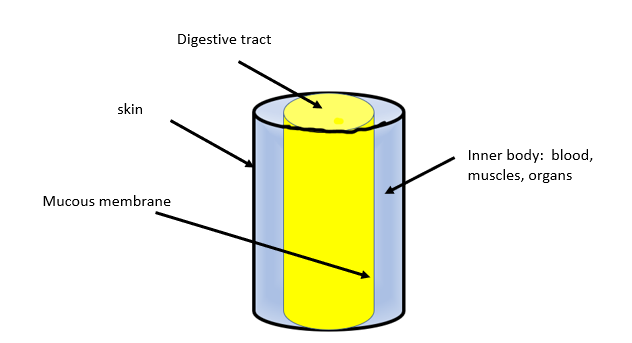|
Inflammation plays a huge role in our lives - from injuries/illnesses to chronic inflammation to auto-immune diseases. Learning when and how to control inflammation can help us live happier, healthier lives. I'm writing a 4 part series to describe the process and impact of inflammation. Part 1 of this series will explain how inflammation is a part of the immune system response to repair damage to the body and to fight off pathogens. Part 2 will discuss what chronic inflammation is, what causes it, and how it impacts the body. Part 3 will detail how chronic inflammation affects the brain. Part 4 will illuminate some things we can do naturally to help inflammation heal acute situations and to (hopefully) reduce chronic inflammation. Part 1: Inflammation as a Part of the Immune System Response If you sprain your ankle or get a cut, you experience swelling, heat, bruising or redness, and pain. In other words, your immune system is sending extra blood and immune cells to the area to 'fix' the injury. Let's look at how the whole process works. Your immune system is comprised of several parts that are designed to protect and repair your body. The first parts are barriers - cells, skin, organs, cilia, mucous membranes, and urine/waste that are designed to keep pathogens (invaders) out. Your skin is the first organ that protects you - it keeps your innards on the inside and everything else outside. Hair in the nose and ears help trap dust and irritants to prevent them from entering the body. Cilia in the lungs help move invaders back out of the lungs. Mucous membranes cover the respiratory, digestive, and reproductive tracts. These areas are inside our bodies, but they still provide a barrier between the external and the internal. To help you understand this, I've drawn a very simplistic diagram below. Obviously, this cylinder isn't a body, but it lets us easily visualize the outer skin (the thick black lines), the digestive tract (the yellow, inner cylinder), the mucous membrane (the thin black lines), and the inner body (the blue part). In a sense, even though the digestive tract is inside our bodies, it's still part of the external skin (but mucusy). Finally, foreign objects and pathogens that we ingest and that our bodies can't use for nutrition, continue on through the digestive tract until they are eliminated through urine/waste. These barriers are a part of the immune system and are maintained by other parts of the immune system.
What happens then if part of the barrier gets broken (i.e. you get a cut)? This is where lymph cells and fluids and white blood cells (WBCs) come into play. They immediately go to work signaling the body to send blood, plasma, and other immune cells (more lymph and WBCs) to rush to the area to fight off any pathogens (invaders) that have entered through the cut and to start repairing the skin. The extra blood causes redness and heat, and the extra plasma and lymph causes swelling and pain (which is in addition to the pain caused by damaged nerve cells). With the swelling and pain, you may not be able to use the injured area normally. This type of inflammation is called 'Acute Inflammation' and it's healthy - it's good for us. It's temporary, and will resolve as it helps the body heal the injury. If our immune systems fight off pathogens, then why do we get sick? Sometimes a pathogen multiplies faster than our immune system can figure out how to kill it. Imagine you breathe in some flu germs. If it's your first exposure to these germs, many types of cells in your body send out a message to lymphocytes (soldier cells) to come quick and fight the pathogen. These lymphocytes rush to the area and start fighting the (rapidly multiplying) flu cells. If the lymphocytes win quickly, you may not even know the pathogen was there. However, if the lymphocytes take a while to figure out how to kill the flu cells, you'll start to feel symptoms - heat in the form of fever (which also kills the pathogen), weakness because your body is using all its energy to defeat the pathogen, mucus full of the dead pathogen and immune cells that were killed in the fight, and so on. If your sinuses are the 'battleground', you'll experience swelling from all the extra lymph that's been sent into battle. As pathogen cells and lymphocytes die in the battle, you'll experience extra mucus - your body's way of expelling the dead cells. Again, this is acute inflammation because it's sudden, severe, and short term. It's good inflammation - it means your body is working the way it's supposed to. So, acute inflammation is a part of the body's natural defense to injury or invasion. We need acute inflammation to set the healing process in motion, to eliminate dead and damaged cells, and to get rid of pathogens. Unfortunately, not all inflammation is good for us. When we find ourselves under long-term, high-level stress, the inflammatory process may become chronic. When that happens, it can have a serious impact on our overall health. Next week's blog will discuss what chronic inflammation is, some of its causes, and some of the ways it significantly affects our bodies. Resources: 1. . Aromahead Institute, School of Essential Oil Studies, A&P Course, www.aromahead.com 2. Hooper, Cameron, Everything You Need to Know About Inflammation; Naturalife; April 6. 2017; https://naturalife.org/health/everything-need-know-inflammation, ,Accessed April 30, 2019 3. Reference*, How Does the Immune System Work With Other Body Systems?, https://www.reference.com/science/immune-system-work-other-body-systems-2adf1bf181240c39, Accessed April 30, 2019 4. Reviewed by Yamini Durani, MD, Immune System, KidsHealth from Nemours, May 2015, https://kidshealth.org/en/parents/immune.html, Accessed April 30, 2019 Comments are closed.
|
Archives
February 2021
CategoriesAuthorKaren Dragoo |

 RSS Feed
RSS Feed